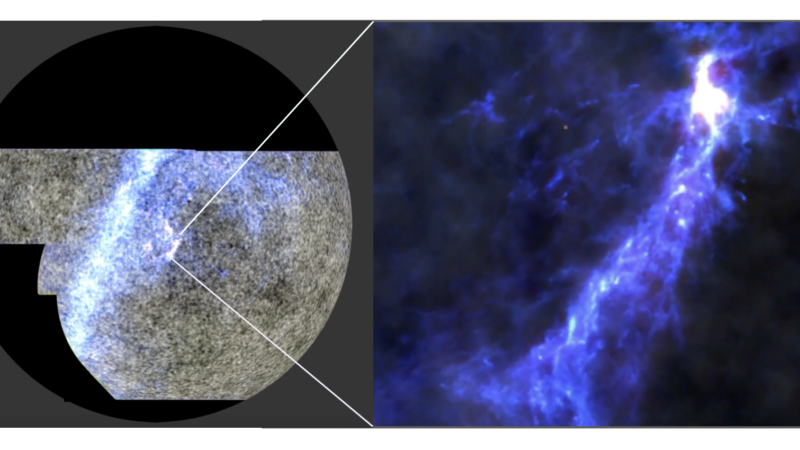New ‘baby pictures’ of the cosmos show the universe in its infancy
Sure, they’re not your typical baby pictures. But a global team of researchers says new images published this week show some of the clearest visualizations yet of the universe in its infancy.
If our roughly 13 billion-year-old cosmos could be considered middle-aged, the researchers note, these new images captured around its 380,000th birthday represent a snapshot of the universe as a newborn.
The images were created using data from the Atacama Cosmology Telescope (ACT), which is located in a remote part of the Chilean Andes and has since been decommissioned. It was the last major data release to come from the project.
ACT had a much higher resolution than the European Space Agency’s Planck space telescope, so strong that it allowed researchers to see the faint polarization of light and create increasingly detailed and far-reaching maps of the universe.
“That means that we can say things about the entire universe at once, such as how mass it has in it, how much hydrogen there is in the entire universe and how much helium there is in the entire universe,” said Suzanne Staggs, director of the ACT.

Some time after the universe burst into existence, according to the Big Bang theory, it became filled with microwave radiation that pervades the cosmos to this day, a phenomenon known as the cosmic microwave background.
That’s what these new maps show — and they’re clearer than ever before, the researchers say. For example, they’re able to see not just how much helium and hydrogen were present billions of years ago, but how the gases were moving, offering hints about what was to come in the universe’s development.
That allows Staggs, who is also a Princeton University professor, and others to test existing mathematical models of the universe. “When we have better and better maps, we can do a better and better job at figuring out that model and figuring out whether it’s correct,” she said.

So far, what we think we know about the universe is checking out. And not only that — the researchers say the new images have helped them measure more precisely the age of the universe (13.8 billion years) and how quickly it’s expanding (67-68 kilometers per second per megaparsec).
“We took this entirely new measurement of the sky, giving us an independent check of the cosmological model, and our results show that it holds up,” Adriaan Duivenvoorden, a lead author of the research with the Max Planck Institute for Astrophysics, said in a statement.
Some of the researchers were scheduled to present their findings Wednesday at a conference held by the American Physical Society in Anaheim, Calif.
Alabama Power seeks to delay rate hike for new gas plant amid outcry
The state’s largest utility has proposed delaying the rate increase from its purchase of a $622 million natural gas plant until 2028.
Former U.S. Sen. Doug Jones announces run for Alabama governor
Jones announced his campaign Monday afternoon, hours after filing campaign paperwork with the Secretary of State's Office. His gubernatorial bid could set up a rematch with U.S. Sen. Tommy Tuberville, the Republican who defeated Jones in 2020 and is now running for governor.
Scorching Saturdays: The rising heat threat inside football stadiums
Excessive heat and more frequent medical incidents in Southern college football stadiums could be a warning sign for universities across the country.
The Gulf States Newsroom is hiring an Audio Editor
The Gulf States Newsroom is hiring an Audio Editor to join our award-winning team covering important regional stories across Mississippi, Alabama and Louisiana.
Judge orders new Alabama Senate map after ruling found racial gerrymandering
U.S. District Judge Anna Manasco, appointed by President Donald Trump during his first term, issued the ruling Monday putting a new court-selected map in place for the 2026 and 2030 elections.
Construction on Meta’s largest data center brings 600% crash spike, chaos to rural Louisiana
An investigation from the Gulf States Newsroom found that trucks contracted to work at the Meta facility are causing delays and dangerous roads in Holly Ridge.









